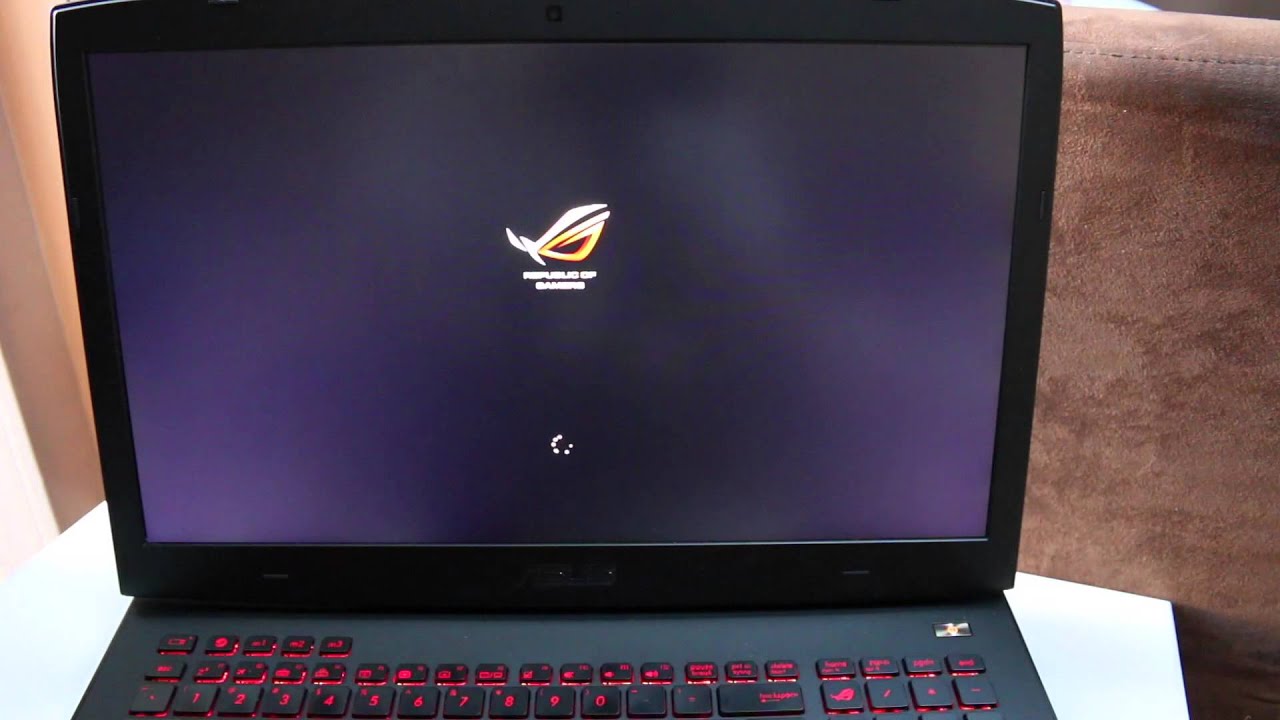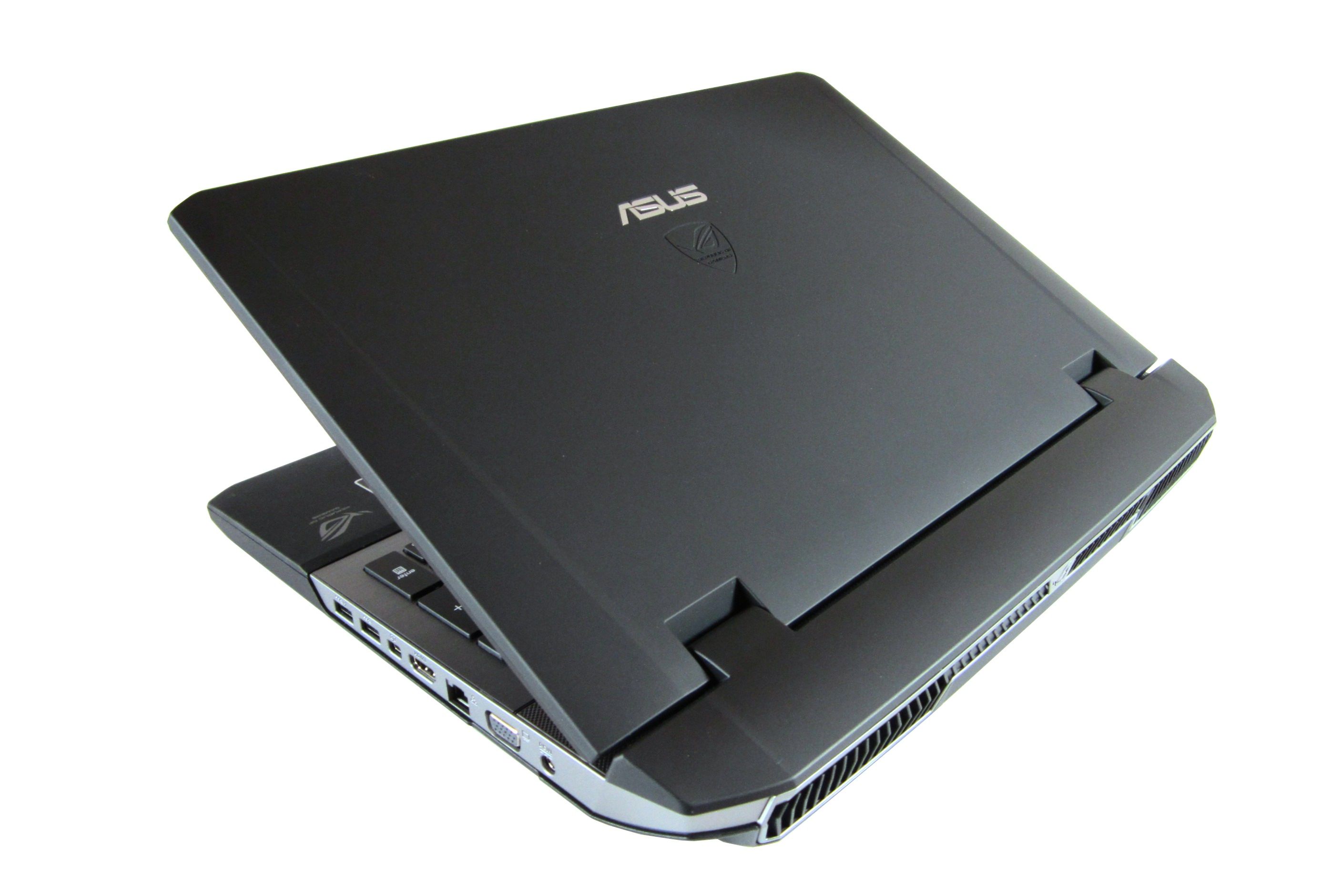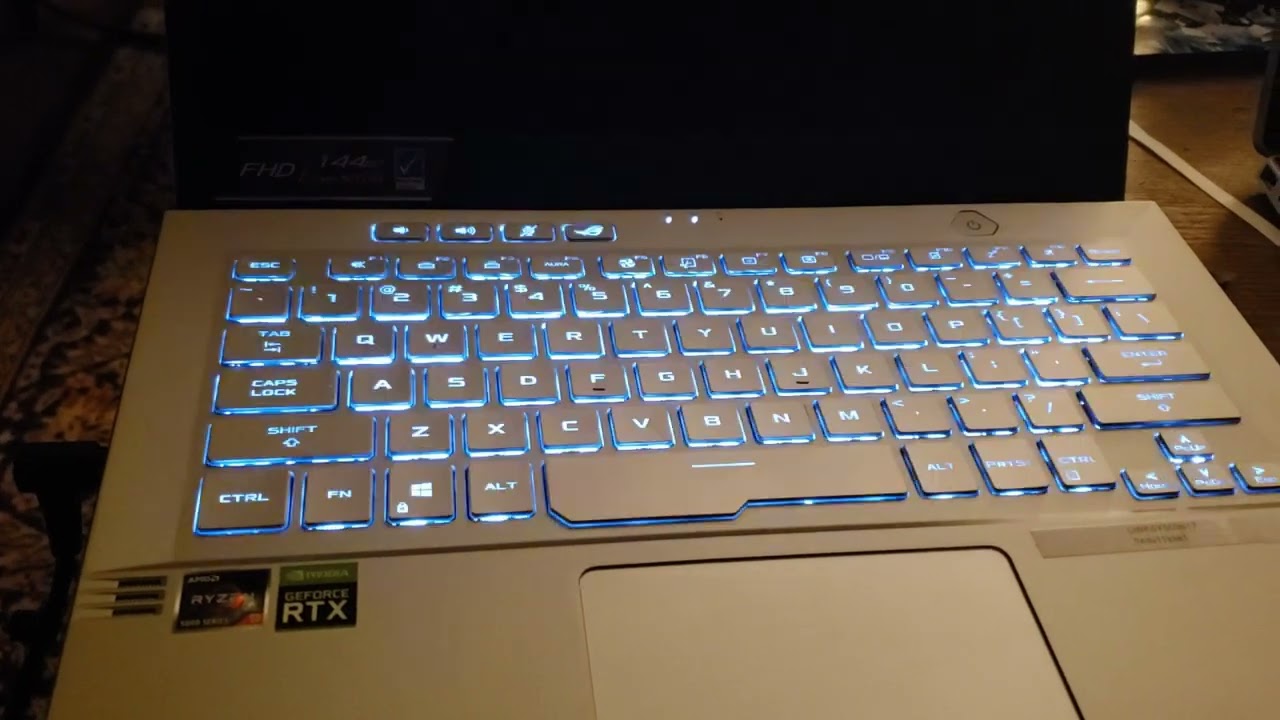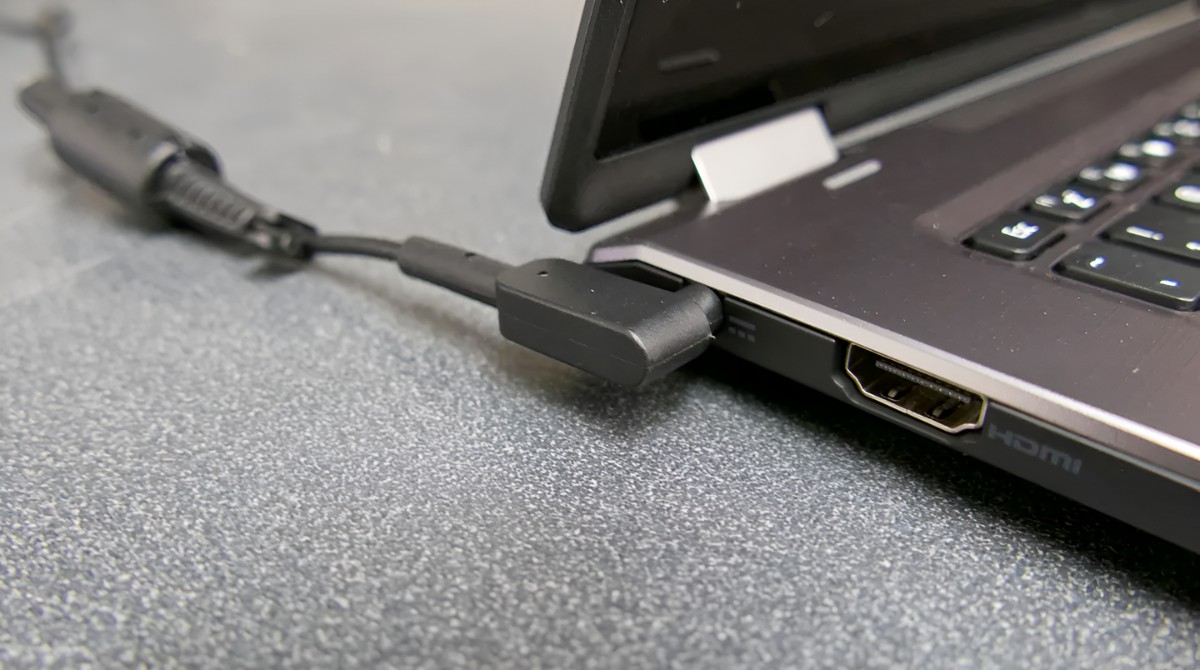Introduction
Welcome to the world of gaming on your ASUS laptop! As a gamer, you know that every little detail matters when it comes to optimizing your gaming experience to achieve peak performance. One key aspect that can greatly impact your gaming setup is the BIOS (Basic Input/Output System) of your ASUS gaming laptop. In this article, we will explore what BIOS is and why you may need to access it on your ASUS gaming laptop.
The BIOS is a crucial component of your laptop’s hardware. It is responsible for initializing all the hardware devices, ensuring they are functioning properly, and providing the necessary instructions for the computer to boot up. When it comes to gaming, accessing the BIOS can give you the power to tweak various settings and configurations to enhance your gaming experience.
Whether you want to overclock your CPU, adjust fan speeds for better cooling, enable virtualization for running virtual machines, or update your graphics card settings, accessing the BIOS is the first step to unlocking these possibilities on your ASUS gaming laptop.
Now, you may be wondering how to access the BIOS on your ASUS gaming laptop. Fear not! In the following sections, we will provide you with a step-by-step guide on how to access the BIOS using various methods. From using the dedicated BIOS key to accessing it through the Advanced Startup options in Windows 10, we’ve got you covered. So, let’s dive in and explore all the ways you can access the BIOS on your ASUS gaming laptop!
What is BIOS?
The BIOS, or Basic Input/Output System, is a firmware embedded in the motherboard of your ASUS gaming laptop. It is the first program that runs when you power on your laptop, setting up the hardware and initializing the operating system. Essentially, the BIOS acts as the bridge between the hardware and software of your laptop.
The primary function of the BIOS is to ensure that all the hardware components in your laptop are properly detected and functioning correctly. It performs a series of power-on self-tests (POST) to check the status and integrity of various hardware devices such as the processor, memory, storage, and peripherals. If any issues are detected during the POST, the BIOS will display an error message or emit a series of beeps to alert you about the problem.
Moreover, the BIOS provides essential configuration settings that can be accessed and modified to tailor your computer’s behavior to your preferences. These settings are stored in a non-volatile memory chip known as CMOS (Complementary Metal-Oxide-Semiconductor).
With the BIOS, you can control a variety of settings, including boot device priorities, enabling or disabling built-in peripherals, adjusting fan speeds, configuring power management options, and even overclocking your CPU for enhanced performance. However, it’s important to note that not all BIOS versions and laptop models offer the same set of options and features.
Traditionally, accessing the BIOS involved pressing a specific key during the boot process to enter the BIOS setup utility. However, newer ASUS gaming laptops may provide alternative methods to access the BIOS, such as through the Windows 10 settings or the Advanced Startup options.
Now that you have a better understanding of what BIOS is and its importance, let’s proceed to the next section to discover various methods to access the BIOS on your ASUS gaming laptop.
Why do you need to access BIOS on your ASUS gaming laptop?
Accessing the BIOS on your ASUS gaming laptop can offer several benefits and customization options that can greatly enhance your gaming experience. Here are some reasons why you may need to access the BIOS:
- Overclocking: Overclocking your CPU can provide a significant boost to your gaming performance by increasing the clock speed and power of your processor. Accessing the BIOS allows you to adjust CPU multiplier, voltage, and other settings to safely overclock your CPU.
- Fan Control: Controlling fan speeds can help improve cooling efficiency and reduce noise while gaming. By accessing the BIOS, you can adjust fan speed curves or enable fan control features to ensure optimal cooling for your gaming laptop.
- Boot Device Priorities: The BIOS allows you to configure the boot device priorities, determining which storage device to boot from. This is useful when you want to install a new operating system or boot from a specific device such as a USB drive or DVD.
- Enable Virtualization: Virtualization technology enables you to run multiple operating systems or virtual machines on your gaming laptop. By accessing the BIOS, you can enable virtualization features like Intel VT-x or AMD-V, enabling you to use software like VMware or VirtualBox.
- Memory Configuration: Some high-end ASUS gaming laptops may have advanced memory settings in the BIOS. You can tweak memory timings or enable XMP profiles to optimize the performance of your RAM.
- Graphics Card Settings: Depending on your ASUS gaming laptop model, you may have access to graphics card settings in the BIOS. This allows you to adjust parameters like GPU clock speed, memory frequency, or enable overclocking for improved gaming performance.
- Resetting BIOS: In some cases, you may encounter issues with your laptop’s hardware or settings. By accessing the BIOS, you can perform a reset, restoring the default settings and resolving any configuration conflicts.
Accessing the BIOS on your ASUS gaming laptop opens up a world of customization and optimization options. It allows you to fine-tune your hardware, overcome limitations, and unleash the full potential of your gaming laptop. However, it’s important to note that making improper changes or adjustments in the BIOS can lead to system instability or even damage. Therefore, it’s recommended to proceed with caution and refer to ASUS’s official documentation or support for guidance.
Step-by-step guide: How to access BIOS on your ASUS gaming laptop
Accessing the BIOS on your ASUS gaming laptop may vary depending on your laptop model and BIOS version. In this step-by-step guide, we will explore multiple methods to access the BIOS. Follow these instructions to access the BIOS on your ASUS gaming laptop:
Method 1: Using the BIOS key
- Start or restart your ASUS gaming laptop.
- During the boot process, look for a message prompting you to press a key to enter the BIOS setup. The key may vary, but common options include F2, Delete, or Esc.
- Quickly press the designated key to enter the BIOS setup. If you miss the timing, you may need to restart your laptop and try again.
Method 2: Through the Advanced Startup options
- Click on the “Start” menu and select “Settings” (gear icon).
- In the Settings window, click on “Update & Security.”
- From the left sidebar, select “Recovery.”
- Under “Advanced Startup,” click on “Restart now.”
- Your laptop will restart and display the “Choose an option” screen.
- Click on “Troubleshoot.”
- Next, click on “Advanced options.”
- Select “UEFI Firmware Settings.”
- Click on “Restart” to enter the BIOS setup.
Method 3: Using Windows 10 settings
- Click on the “Start” menu and select “Settings” (gear icon).
- In the Settings window, click on “Update & Security.”
- From the left sidebar, select “Recovery.”
- Under “Advanced Startup,” click on “Restart now.”
- Your laptop will restart and display the “Choose an option” screen.
- Click on “Troubleshoot.”
- Next, click on “Advanced options.”
- Select “UEFI Firmware Settings.”
- Click on “Restart” to enter the BIOS setup.
Method 4: From a powered off state
- Power off your ASUS gaming laptop.
- Press the power button to turn on the laptop.
- Immediately start pressing the designated key to enter the BIOS setup. The key may vary, but common options include F2, Delete, or Esc.
Once you successfully enter the BIOS setup, you can navigate through the various options using the arrow keys on your keyboard. Remember, the BIOS setup interface may differ based on the laptop model and BIOS version. Make the necessary changes, save your settings, and exit the BIOS to apply the modifications to your ASUS gaming laptop.
Now that you have learned several methods to access the BIOS on your ASUS gaming laptop, you are ready to take control of your laptop’s hardware settings and unleash its full potential for gaming.
Method 1: Using the BIOS key
One common method to access the BIOS on your ASUS gaming laptop is by using the BIOS key. This method involves pressing a specific key during the boot process to enter the BIOS setup. Follow these steps to access the BIOS using the BIOS key:
- Start or restart your ASUS gaming laptop.
- During the boot process, keep an eye out for a message on the screen that prompts you to press a specific key to enter the BIOS setup. The key may vary depending on your ASUS laptop model, BIOS version, or even the motherboard manufacturer. Common BIOS keys for ASUS gaming laptops include F2, Delete, or Esc.
- Once you identify the correct key, quickly press it multiple times to ensure you catch the boot time window.
- If successful, your ASUS gaming laptop will enter the BIOS setup. You will be greeted with a graphical or textual user interface, indicating that you are inside the BIOS.
Once you are inside the BIOS setup, you can navigate through different sections and options using the arrow keys on your keyboard. The BIOS interface may vary depending on your laptop model and BIOS version.
Take caution while making changes in the BIOS settings. Incorrect configurations can lead to system instability or even damage. If you are unsure about a specific setting, it’s recommended to consult the official documentation or support from ASUS.
After making the desired changes, be sure to save your settings before exiting the BIOS. Look for an option such as “Save and Exit,” usually located at the bottom of the BIOS interface. Press the corresponding key to save the changes and reboot your laptop.
Remember, the BIOS key and the specific steps may vary, so consult your laptop’s user manual or ASUS’s official website for the correct information specific to your ASUS gaming laptop.
Now that you know how to access the BIOS using the BIOS key, you can easily make adjustments to optimize and customize your ASUS gaming laptop to suit your gaming needs.
Method 2: Through the Advanced Startup options
Another method to access the BIOS on your ASUS gaming laptop is through the Advanced Startup options in Windows 10. This method allows you to access the BIOS directly from within the operating system. Follow these steps to access the BIOS using the Advanced Startup options:
- Click on the “Start” menu and select “Settings” (gear icon) to open the Windows Settings.
- In the Settings window, click on “Update & Security.”
- From the left sidebar, select “Recovery.”
- Under the “Advanced Startup” section, click on the “Restart now” button.
- Your ASUS gaming laptop will restart and display the “Choose an option” screen.
- Click on “Troubleshoot” to access the troubleshooting options.
- Next, click on “Advanced options.”
- Select “UEFI Firmware Settings” from the list of advanced options.
- Click on the “Restart” button located on the UEFI Firmware Settings screen.
Once you complete these steps, your ASUS gaming laptop will restart and boot directly into the BIOS setup interface.
Inside the BIOS setup, you can navigate through different sections and options using the arrow keys on your keyboard. Remember that the BIOS interface may have a different layout or structure depending on your laptop model and BIOS version.
When you are done making changes in the BIOS settings, don’t forget to save your settings before exiting the BIOS. Look for a “Save and Exit” or similar option, usually located at the bottom of the BIOS interface. Press the corresponding key to save the changes and reboot your laptop.
It’s important to note that not all ASUS gaming laptops may offer the Advanced Startup options to access the BIOS. In such cases, you can try one of the other methods mentioned in this article or refer to the official documentation or support from ASUS for further assistance.
Now that you know how to access the BIOS through the Advanced Startup options, you can easily configure and optimize your ASUS gaming laptop to meet your specific requirements.
Method 3: Using Windows 10 settings
An alternative method to access the BIOS on your ASUS gaming laptop is through the Windows 10 settings. This method allows you to access the BIOS directly from within the operating system. Follow these steps to access the BIOS using the Windows 10 settings:
- Click on the “Start” menu and select “Settings” (gear icon) to open the Windows Settings.
- In the Settings window, click on “Update & Security.”
- From the left sidebar, select “Recovery.”
- Under the “Advanced Startup” section, click on the “Restart now” button.
- Your ASUS gaming laptop will restart and display the “Choose an option” screen.
- Click on “Troubleshoot.”
- Next, click on “Advanced options.”
- Select “UEFI Firmware Settings” from the list of advanced options.
- Click on the “Restart” button located on the UEFI Firmware Settings screen.
After completing these steps, your ASUS gaming laptop will restart and boot directly into the BIOS setup interface.
Keep in mind that the BIOS interface may have a different layout or structure depending on your laptop model and BIOS version. Use the arrow keys on your keyboard to navigate through different sections and options in the BIOS.
When you finish making changes in the BIOS settings, it is important to save your settings before exiting the BIOS. Look for a “Save and Exit” or similar option, usually located at the bottom of the BIOS interface. Press the corresponding key to save the changes and reboot your laptop.
It’s worth noting that not all ASUS gaming laptops may offer the option to access the BIOS through the Windows 10 settings. In such cases, you can attempt one of the other methods described in this article or refer to the official documentation or support from ASUS for further guidance.
Now that you know how to access the BIOS through the Windows 10 settings, you can conveniently configure and optimize your ASUS gaming laptop to suit your needs.
Method 4: From a powered off state
If you prefer to access the BIOS on your ASUS gaming laptop from a completely powered off state, you can do so by following these steps:
- Power off your ASUS gaming laptop.
- Ensure that your laptop is completely turned off and not in sleep or hibernation mode.
- Press the power button to turn on your laptop.
- Immediately start pressing the designated key to access the BIOS setup. Common BIOS keys for ASUS gaming laptops include F2, Delete, or Esc.
By pressing the BIOS key at the right time during the startup process, your ASUS gaming laptop should enter the BIOS setup interface.
Once you are inside the BIOS setup, you can navigate through different sections and options using the arrow keys on your keyboard. Keep in mind that the specific layout and structure of the BIOS interface may differ depending on your laptop model and BIOS version.
When you have made the desired changes in the BIOS settings, be sure to save your settings before exiting the BIOS. Look for an option such as “Save and Exit,” typically located at the bottom of the BIOS interface. Press the corresponding key to save the changes and reboot your laptop.
Remember that the BIOS key and the specific steps may vary, so it’s recommended to consult your laptop’s user manual or ASUS’s official website for accurate information specific to your ASUS gaming laptop model.
Now that you know how to access the BIOS from a powered off state, you can easily customize and optimize your ASUS gaming laptop to maximize your gaming experience.
Additional tips and considerations when accessing BIOS on an ASUS gaming laptop
Accessing the BIOS on your ASUS gaming laptop provides you with the ability to customize and optimize various settings. However, there are some additional tips and considerations to keep in mind to ensure a smooth and successful experience:
- Research specific key: Different ASUS gaming laptop models may have different BIOS keys. It’s essential to research and identify the specific key required to access the BIOS on your particular model. Consult the user manual or ASUS’s official website for accurate information.
- Timing is crucial: When using the BIOS key method, you need to press the key at the right moment during the boot process. Timing is crucial, so be prepared to press the key repeatedly upon startup until the BIOS setup interface appears.
- Keep track of changes: Before making any changes in the BIOS settings, it’s essential to keep track of the modifications you make. This helps in case you need to troubleshoot or revert any settings you may have changed mistakenly.
- Document settings: If you make significant changes in the BIOS settings, it’s a good practice to document them for future reference. This includes noting down any overclocking parameters, fan speed configurations, or other tweaks you have applied.
- Be cautious with overclocking: While overclocking can provide performance gains, it also increases the stress and temperature on your laptop’s components. Ensure you have proper cooling and monitor the temperatures to avoid overheating and potential damage to your hardware.
- Refer to official documentation: If you are unsure about a specific BIOS setting or its impact, it is always best to refer to the official documentation or support from ASUS. This ensures that you have accurate information and minimizes the risk of any unintended consequences.
- Take note of BIOS versions: BIOS updates can introduce new features, bug fixes, and improvements. It’s worth checking and updating to the latest BIOS version for your ASUS gaming laptop. However, ensure that you follow the correct update process and only update when necessary.
- Proceed with caution: Making incorrect changes in the BIOS settings can lead to system instability or even damage to your hardware. It’s essential to proceed with caution and avoid modifying settings unless you fully understand their implications.
Remember that accessing the BIOS gives you control over critical system settings, and any modifications should be made cautiously and with proper knowledge. If you are uncertain or uncomfortable with making changes, it’s recommended to seek assistance from a professional or consult ASUS’s official support channels.
By following these additional tips and considerations, you can access the BIOS on your ASUS gaming laptop confidently and make informed decisions to optimize your gaming experience.
Conclusion
Accessing the BIOS on your ASUS gaming laptop is a valuable skill that allows you to customize and optimize your gaming experience. Whether you want to overclock your CPU, adjust fan speeds, configure boot device priorities, or enable virtualization, accessing the BIOS opens up a world of possibilities.
In this article, we explored multiple methods to access the BIOS on your ASUS gaming laptop. Whether you prefer using the BIOS key, the Advanced Startup options, the Windows 10 settings, or accessing it from a powered off state, you have learned step-by-step guides for each method. Each method offers its own advantages and may be more suitable for specific situations.
It’s important to remember that accessing the BIOS requires caution. Making incorrect changes or adjustments can lead to system instability or hardware damage. Always refer to ASUS’s official documentation or support for guidance and ensure you understand the implications of any modifications you make.
By following the additional tips and considerations outlined in this article, such as researching the specific BIOS key, keeping track of changes, and being cautious with overclocking, you can confidently access and utilize the BIOS features on your ASUS gaming laptop.
Now that you have a deeper understanding of what BIOS is, why you may need to access it, and how to access it on your ASUS gaming laptop, you can take control and harness the full potential of your gaming hardware. Enjoy the customization and optimization that the BIOS provides, and elevate your gaming experience to new heights!

























